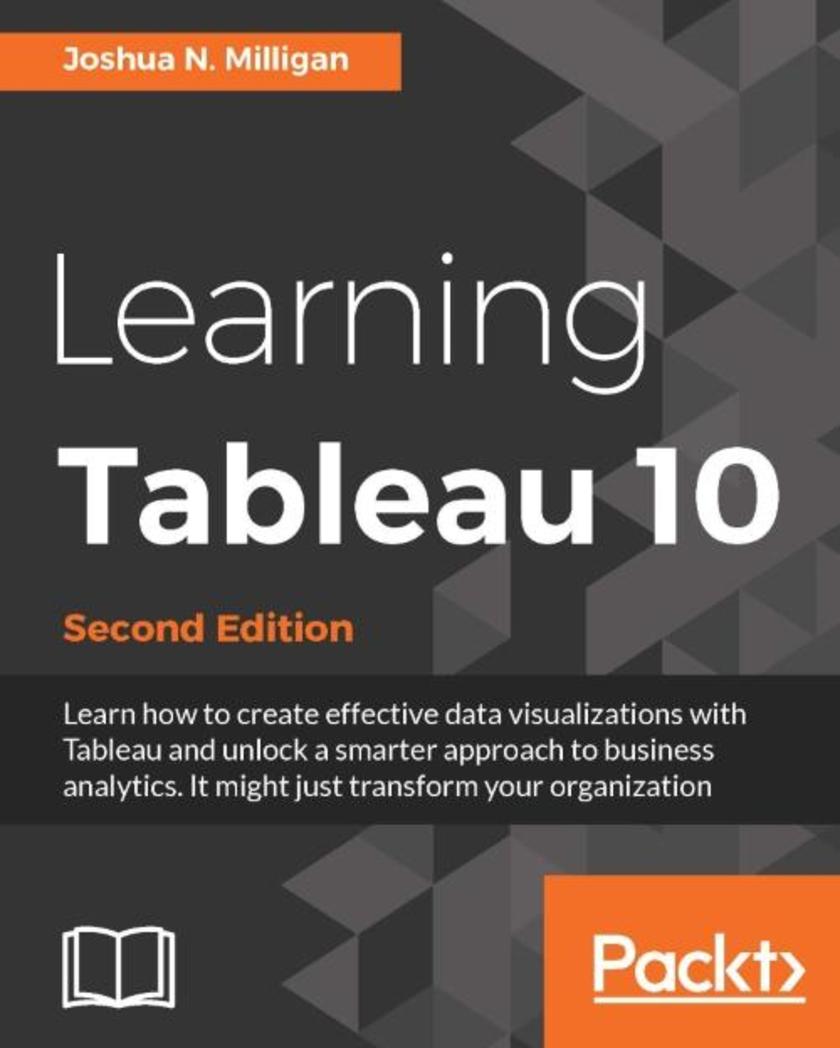
Learning Tableau 10 - Second Edition
¥99.18
Learn how to create effective data visualizations with Tableau and unlock a smarter approach to business analytics. It might just transform your organization About This Book Create stylish visualizations and dashboards that explain complexity with clarity Learn effective data storytelling to transform how your business uses ideas and makes decisions Explore all the new features in Tableau 10 and start to redefine what business analytics means to your organization Who This Book Is For Got dataNot sure what to make of itThis is the guide for you – whether you’ve been working with Tableau for years or are just beginning your adventure into business analytics. What You Will Learn Find out how to build effective visualizations and dashboards Prepare and clean your data so you can be sure Tableau is finding answers to your questions – not raising more problems Discover how to create advanced visualizations that explain complexity with clarity and style Dig deeper into your data with clustering and distribution models that allow you to analyze trends and make forecasts Learn how to use data storytelling to aid decision-making and strategy Share dashboards and visualizations to cultivate a culture where data is available and valued In Detail Tableau has for some time been one of the most popular Business Intelligence and data visualization tools available. WhyBecause, quite simply, it’s a tool that’s responsive to the needs of modern businesses. But it’s most effective when you know how to get what you want from it – it might make your business intelligent, but it isn’t going to make you intelligent… We’ll make sure you’re well prepared to take full advantage of Tableau 10’s new features. Whether you’re an experienced data analyst that wants to explore 2016’s new Tableau, or you’re a beginner that wants to expand their skillset and bring a more professional and sharper approach to their organization, we’ve got you covered. Beginning with the fundamentals, such as data preparation, you’ll soon learn how to build and customize your own data visualizations and dashboards, essential for high-level visibility and effective data storytelling. You’ll also find out how to so trend analysis and forecasting using clustering and distribution models to inform your analytics. But it’s not just about you – when it comes to data it’s all about availability and access. That’s why we’ll show you how to share your Tableau visualizations. It’s only once insights are shared and communicated that you – and your organization – will start making smarter and informed decisions. And really, that’s exactly what this guide is for. Style and approach Practical yet comprehensive, this Tableau guide takes you from the fundamentals of the tool before diving deeper into creating advanced visualizations. Covering the latest features found in Tableau 10, this might be the guide that transforms your organization.
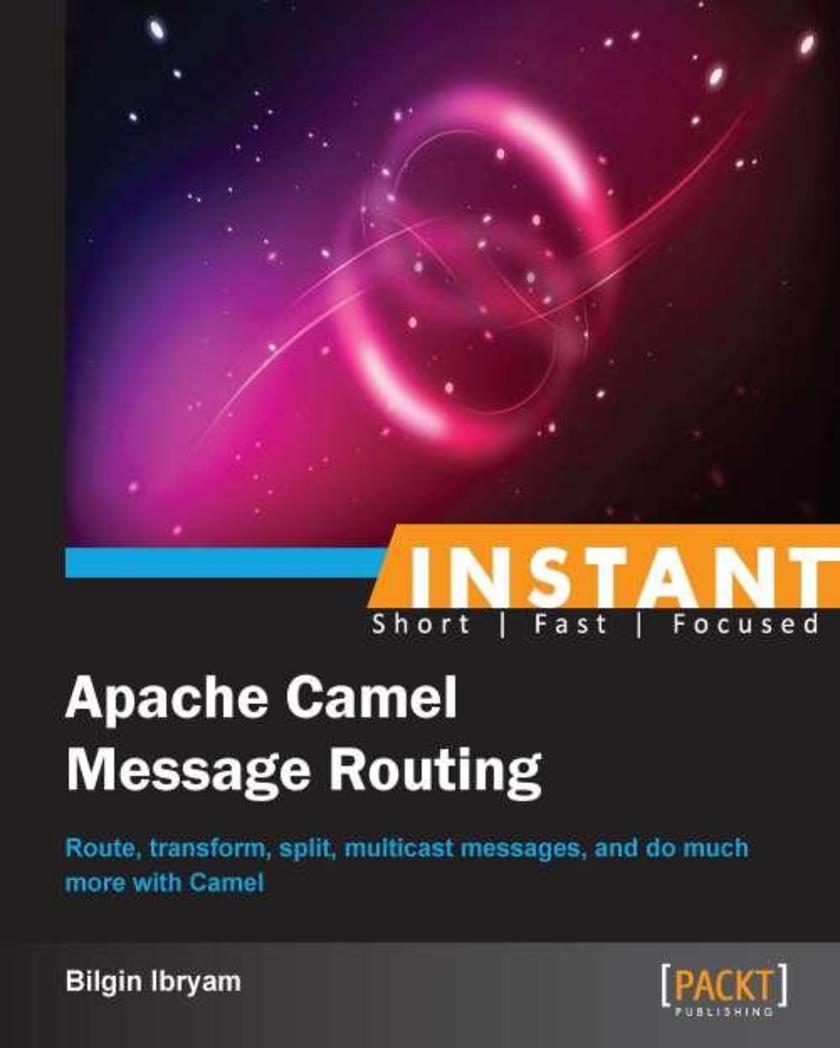
Instant Apache Camel Message Routing
¥45.77
Filled with practical, step-by-step instructions and clear explanations for the most important and useful tasks. This short, instruction-based guide shows you how to perform application integration using the industry standard Enterprise Integration Patterns.This book is intended for Java developers who are new to Apache Camel and message- oriented applications.
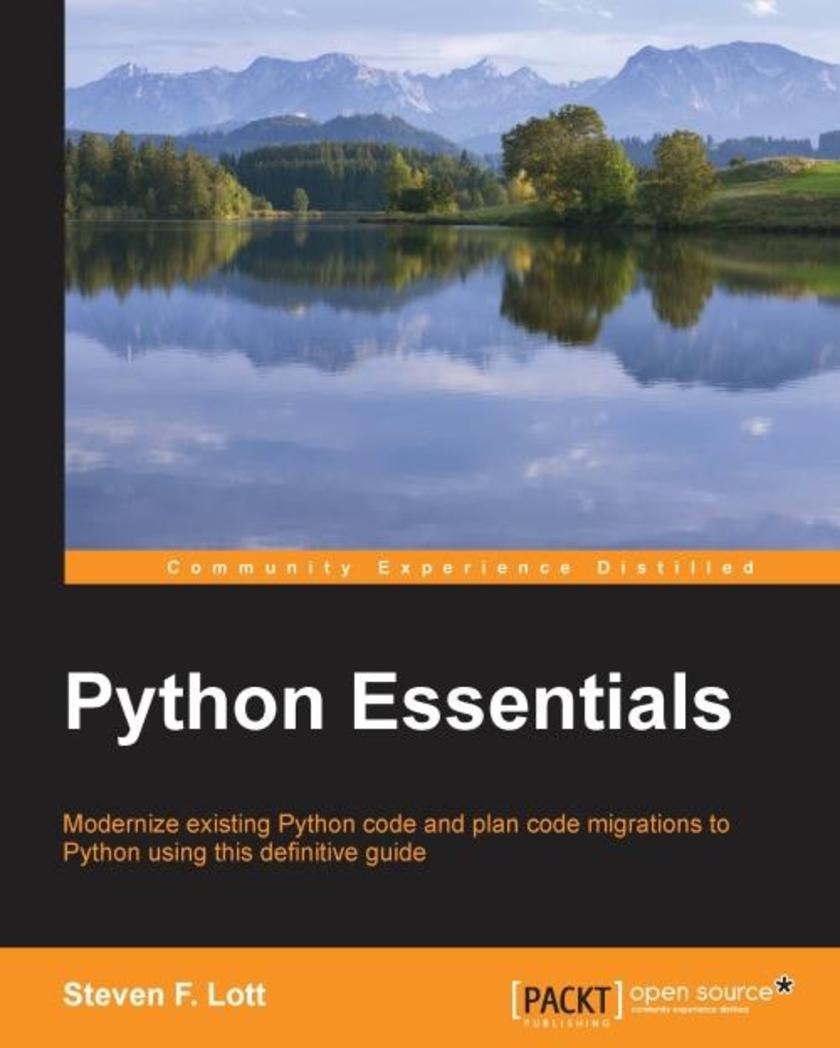
Python Essentials
¥71.93
This book is designed for Python 2 developers who want to get to grips with Python 3 in a short period of time. It covers the key features of Python, assuming you are familiar with the fundamentals of Python 2.
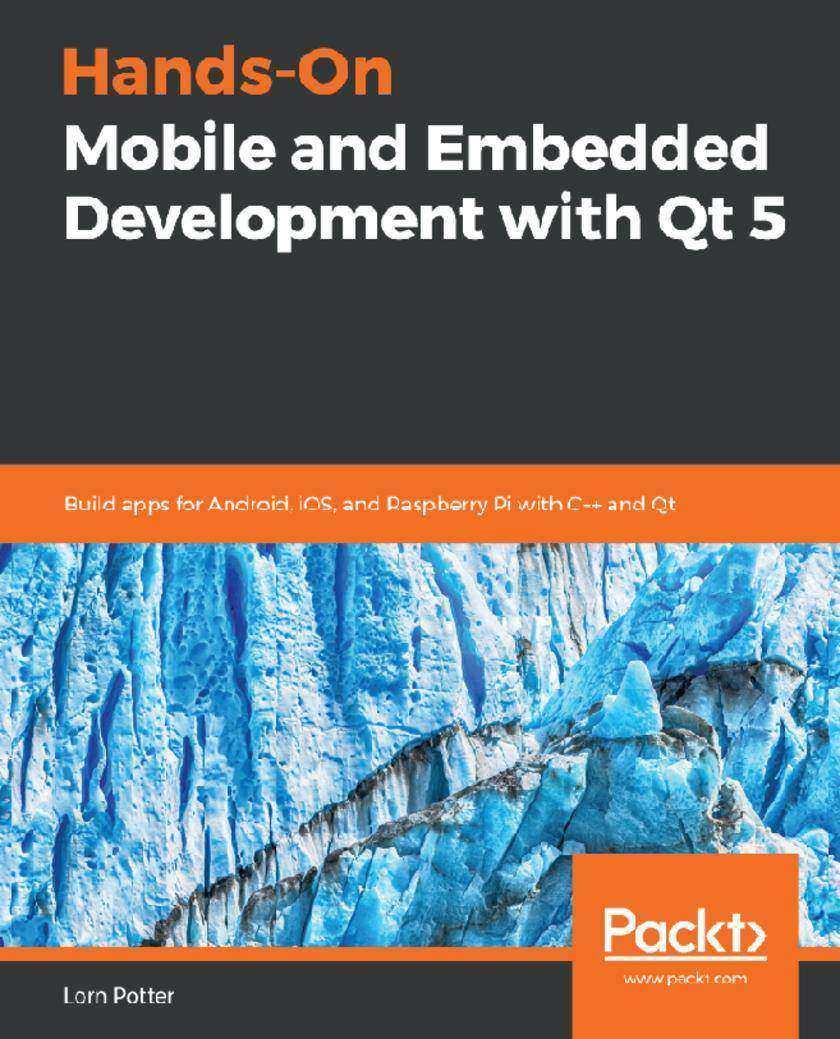
Hands-On Mobile and Embedded Development with Qt 5
¥70.84
Explore Qt framework and APIs for building cross-platform applications for mobile devices, embedded systems, and IoT Key Features * Build cross-platform applications and deploy them across mobile and connected devices * Design 2D and 3D UIs for embedded systems using Yocto and Qt Creator * Build machine to machine automation solution using QtSensors, QtMQTT, and QtWebSockets Book Description Qt is a world-class framework, helping you to develop rich graphical user interfaces (GUIs) and multi-platform applications that run on all major desktop platforms and most mobile or embedded platforms. The framework helps you connect the dots across platforms and between online and physical experience. This book will help you leverage the fully-featured Qt framework and its modular cross-platform library classes and intuitive APIs to develop applications for mobile, IoT, and industrial embedded systems. Considerations such as screen size, device orientation changes, and small memory will be discussed. We will focus on various core aspects of embedded and mobile systems, such as connectivity, networking, and sensors; there is no IoT without sensors. You will learn how to quickly design a flexible, fast, and responsive UI that looks great. Going further, you will implement different elements in a matter of minutes and synchronize the UI elements with the 3D assets with high precision. You will learn how to create high-performance embedded systems with 3D/2D user interfaces, and deploy and test on your target hardware. The book will explore several new features, including Qt for WebAssembly. At the end of this book, you will learn about creating a full software stack for embedded Linux systems using Yocto and Boot to Qt for Device Creation. What you will learn * Explore the latest features of Qt, such as preview for Qt for Python and Qt for WebAssembly * Create fluid UIs with a dynamic layout for different sized screens * Deploy embedded applications on Linux systems using Yocto * Design Qt APIs for building applications for embedded and mobile devices * Utilize connectivity for networked and machine automated applications * Discover effective techniques to apply graphical effects using Qt Quick apps Who this book is for The book is ideal for mobile developers, embedded systems engineers and enthusiasts who are interested in building cross-platform applications with Qt. Prior knowledge of C++ is required.
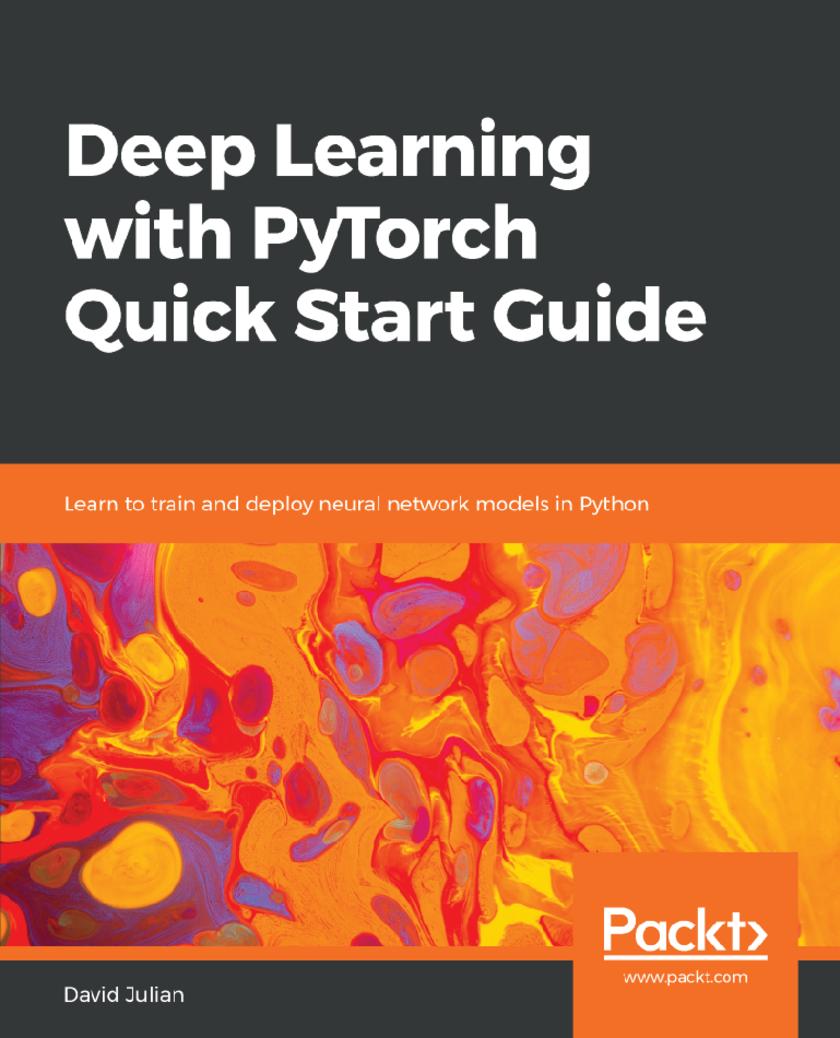
Deep Learning with PyTorch Quick Start Guide
¥54.49
Introduction to deep learning and PyTorch by building a convolutional neural network and recurrent neural network for real-world use cases such as image classification, transfer learning, and natural language processing. Key Features *Clear and concise explanations *Gives important insights into deep learning models *Practical demonstration of key concepts Book Description PyTorch is extremely powerful and yet easy to learn. It provides advanced features, such as supporting multiprocessor, distributed, and parallel computation. This book is an excellent entry point for those wanting to explore deep learning with PyTorch to harness its power. This book will introduce you to the PyTorch deep learning library and teach you how to train deep learning models without any hassle. We will set up the deep learning environment using PyTorch, and then train and deploy different types of deep learning models, such as CNN, RNN, and autoencoders. You will learn how to optimize models by tuning hyperparameters and how to use PyTorch in multiprocessor and distributed environments. We will discuss long short-term memory network (LSTMs) and build a language model to predict text. By the end of this book, you will be familiar with PyTorch's capabilities and be able to utilize the library to train your neural networks with relative ease. What you will learn *Set up the deep learning environment using the PyTorch library *Learn to build a deep learning model for image classification *Use a convolutional neural network for transfer learning *Understand to use PyTorch for natural language processing *Use a recurrent neural network to classify text *Understand how to optimize PyTorch in multiprocessor and distributed environments *Train, optimize, and deploy your neural networks for maximum accuracy and performance *Learn to deploy production-ready models Who this book is for Developers and Data Scientist familiar with Machine Learning but new to deep learning, or existing practitioners of deep learning who would like to use PyTorch to train their deep learning models will find this book to be useful. Having knowledge of Python programming will be an added advantage, while previous exposure to PyTorch is not needed.
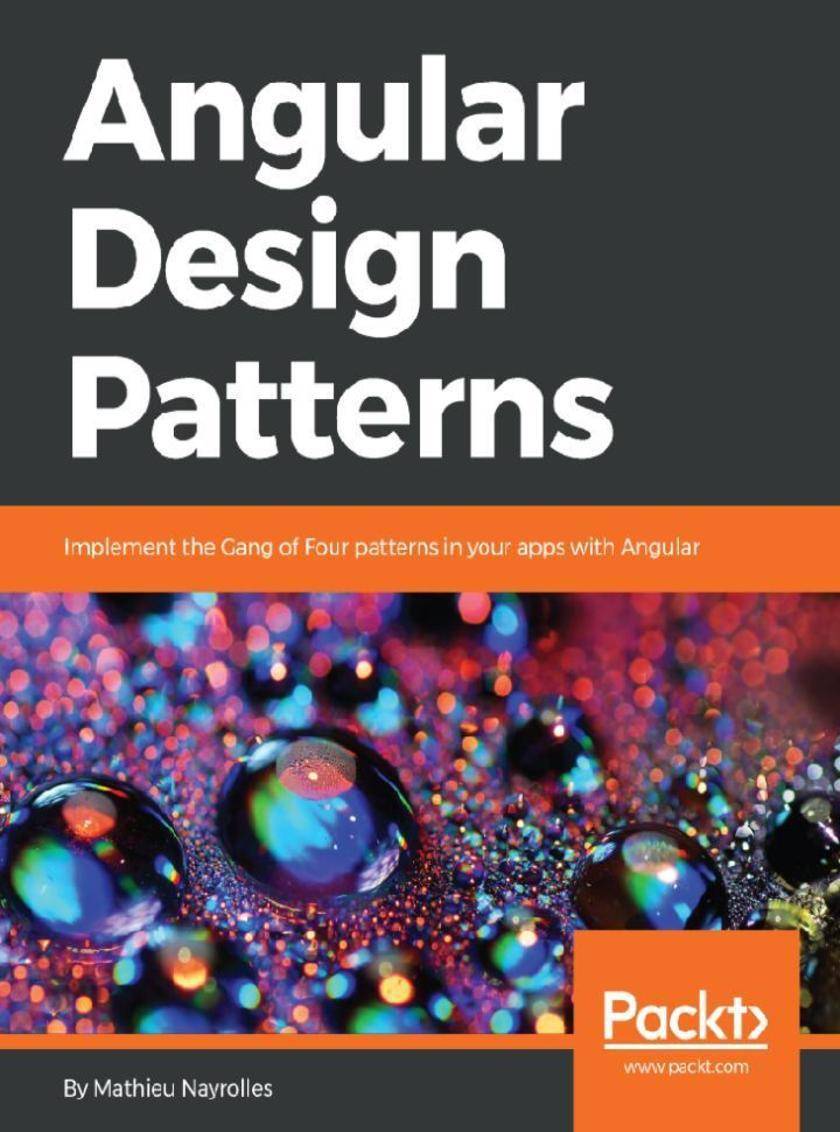
Angular Design Patterns
¥52.31
Make the most of Angular by leveraging design patterns and best practices to build stable and high performing apps Key Features *Get to grips with the benefits and applicability of using different design patterns in Angular with the help of real-world examples *Identify and prevent common problems, programming errors, and anti-patterns *Packed with easy-to-follow examples that can be used to create reusable code and extensible designs Book Description This book is an insightful journey through the most valuable design patterns, and it will provide clear guidance on how to use them effectively in Angular. You will explore some of the best ways to work with Angular and how to use it to meet the stability and performance required in today's web development world. You’ll get to know some Angular best practices to improve your productivity and the code base of your application. We will take you on a journey through Angular designs for the real world, using a combination of case studies, design patterns to follow, and anti-patterns to avoid. By the end of the book, you will understand the various features of Angular, and will be able to apply well-known, industry-proven design patterns in your work. What you will learn *Understand Angular design patterns and anti-patterns *Implement the most useful GoF patterns for Angular *Explore some of the most famous navigational patterns for Angular *Get to know and implement stability patterns *Explore and implement operations patterns *Explore the official best practices for Angular *Monitor and improve the performance of Angular applications Who this book is for If you want to increase your understanding of Angular and apply it to real-life application development, then this book is for you.
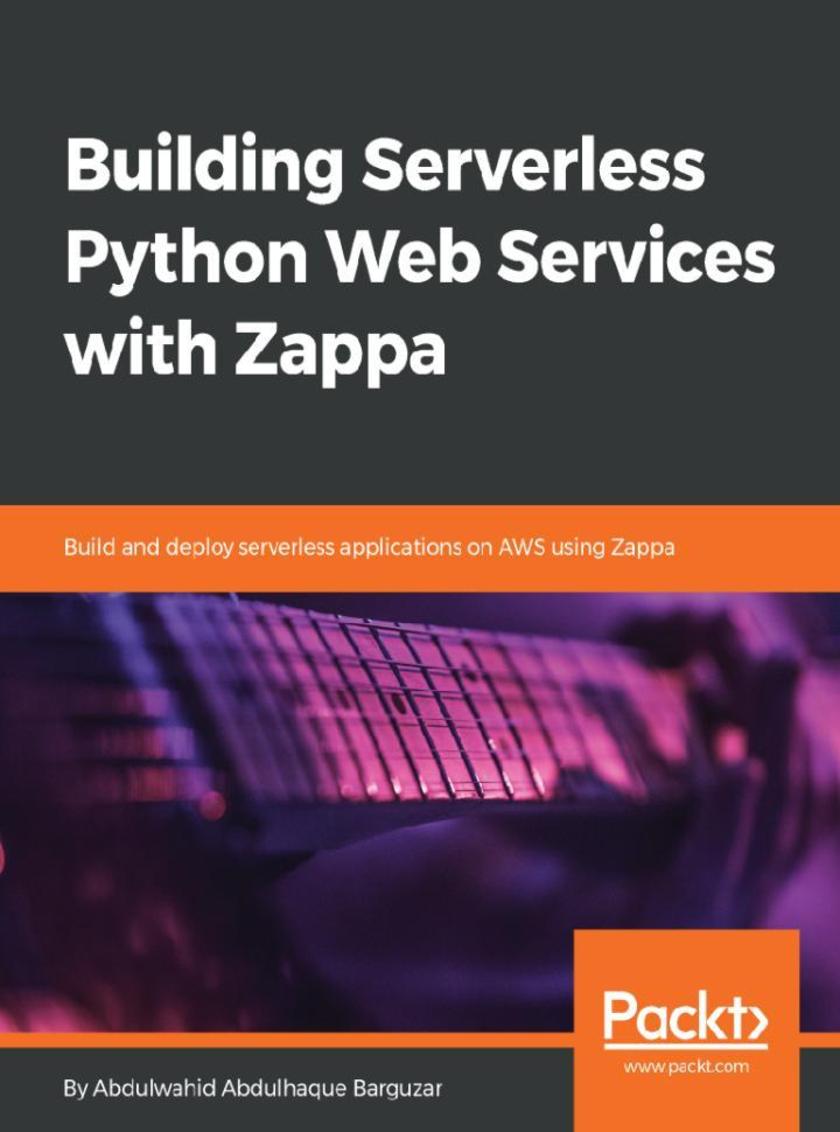
Building Serverless Python Web Services with Zappa
¥69.75
Master serverless architectures in Python and their implementation, with Zappa on three different frameworks. Key Features * Scalable serverless Python web services using Django, Flask, and Pyramid. * Learn Asynchronous task execution on AWS Lambda and scheduling using Zappa. * Implementing Zappa in a Docker container. Book Description Serverless applications are becoming very popular these days, not just because they save developers the trouble of managing the servers, but also because they provide several other benefits such as cutting heavy costs and improving the overall performance of the application. This book will help you build serverless applications in a quick and efficient way. We begin with an introduction to AWS and the API gateway, the environment for serverless development, and Zappa. We then look at building, testing, and deploying apps in AWS with three different frameworks--Flask, Django, and Pyramid. Setting up a custom domain along with SSL certificates and configuring them with Zappa is also covered. A few advanced Zappa settings are also covered along with securing Zappa with AWS VPC. By the end of the book you will have mastered using three frameworks to build robust and cost-efficient serverless apps in Python. What you will learn *Build, test, and deploy a simple web service using AWS CLI *Integrate Flask-based Python applications, via AWS CLI configuration *Design Rest APIs integrated with Zappa for Flask and Django *Create a project in the Pyramid framework and configure it with Zappa *Generate SSL Certificates using Amazon Certificate Manager *Configure custom domains with AWS Route 53 *Create a Docker container similar to AWS Lambda Who this book is for Python Developers who are interested in learning how to develop fast and highly scalable serverless applications in Python, will find this book useful
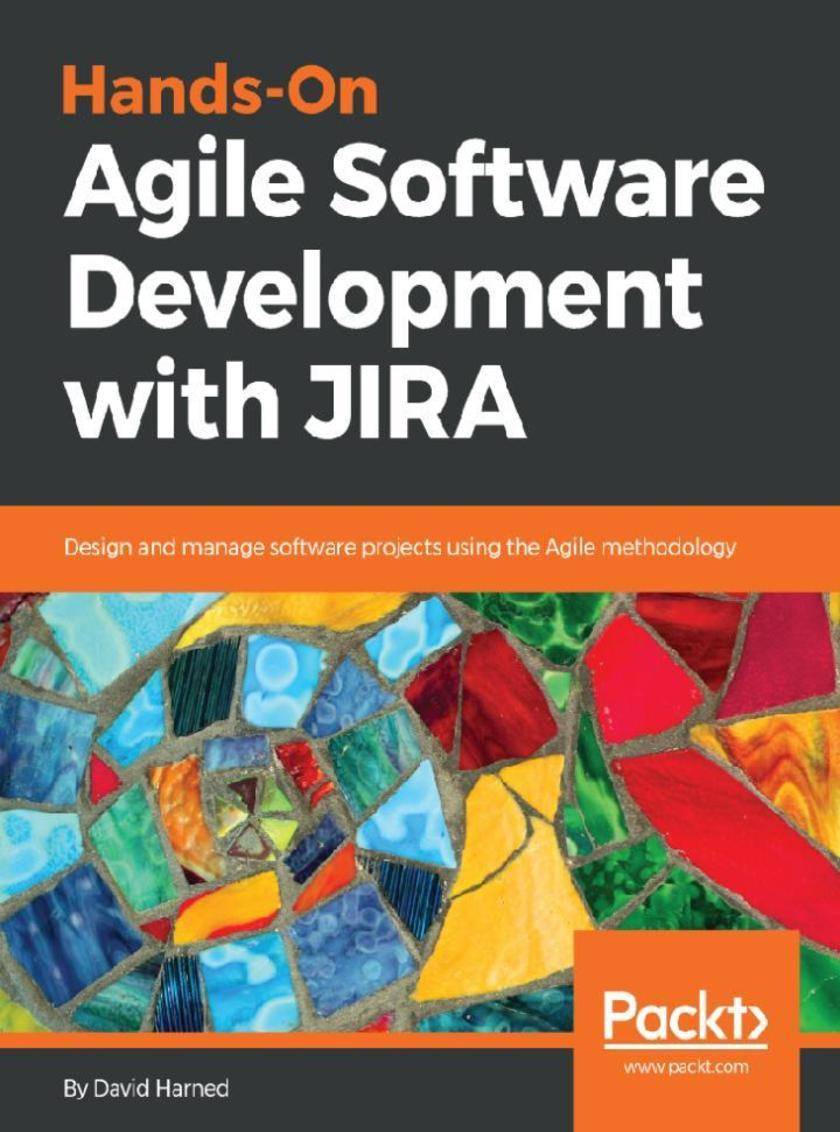
Hands-On Agile Software Development with JIRA
¥52.31
Plan, track, and release great software Key Features * Learn to create reports and dashboard for effective project management * Implement your development strategy in JIRA. * Practices to help you manage the issues in the development team Book Description As teams scale in size, project management can get very complicated. One of the best tools to deal with this kind of problem is JIRA. This book will start by organizing your project requirements and the principles of Agile development to get you started. You will then be introduced to set up a JIRA account and the JIRA ecosystem to help you implement a dashboard for your team's work and issues. You will learn how to manage any issues and bugs that might emerge in the development stage. Going ahead, the book will help you build reports and use them to plan the releases based on the study of the reports. Towards the end, you will come across working with the gathered data and create a dashboard that helps you track the project's development. What you will learn * Create your first project (and manage existing projects) in JIRA * Manage your board view and backlogs in JIRA * Run a Scrum Sprint project in JIRA * Create reports (including topic-based reports) * Forecast using versions * Search for issues with JIRA Query Language (JQL) * Execute bulk changes to issues * Create custom filters, dashboards, and widgets * Create epics, stories, bugs, and tasks Who this book is for This book is for administrators who wants to apply the Agile approach to managing the issues, bugs, and releases in their software development projects using JIRA.
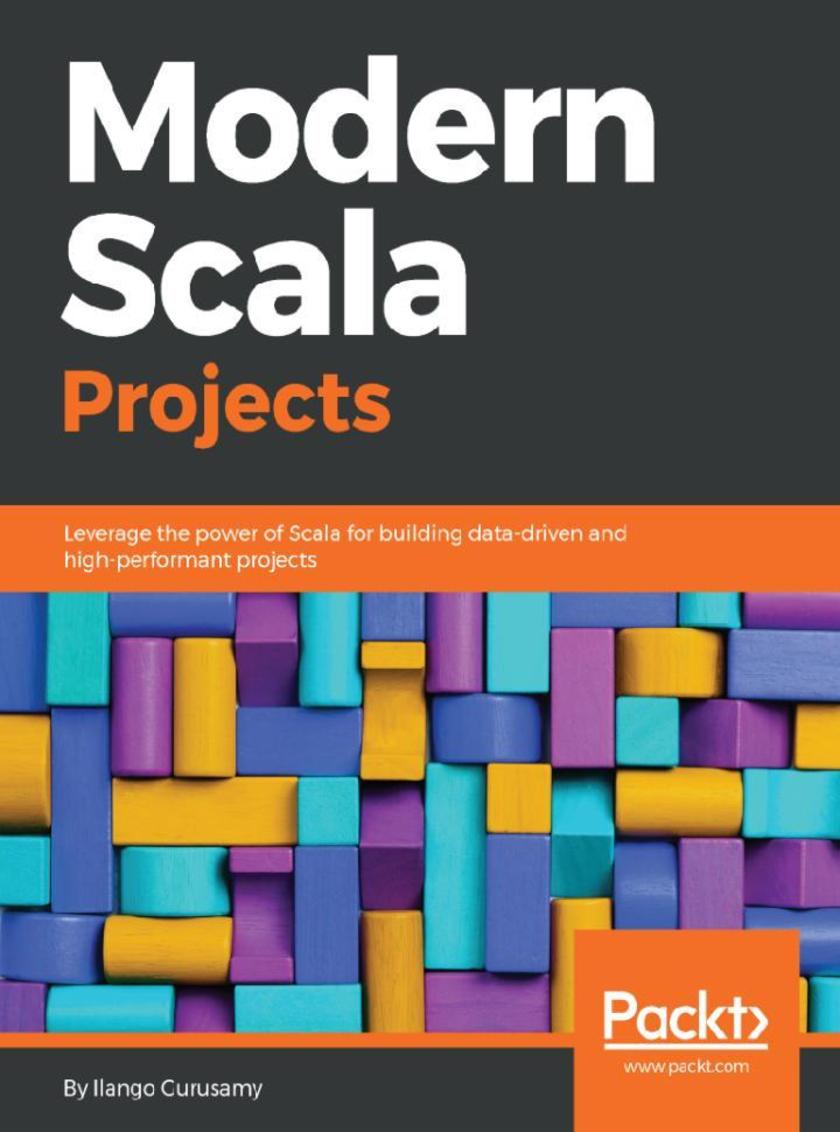
Modern Scala Projects
¥87.19
Use an open source firewall and features such as failover, load balancer, OpenVPN, IPSec, and Squid to protect your network Key Features *Explore pfSense, a trusted open source network security solution *Configure pfSense as a firewall and create and manage firewall rules *Test pfSense for failover and load balancing across multiple WAN connections Book Description While connected to the internet, you’re a potential target for an array of cyber threats, such as hackers, keyloggers, and Trojans that attack through unpatched security holes. A firewall works as a barrier (or ‘shield’) between your computer and cyberspace. pfSense is highly versatile firewall software. With thousands of enterprises using pfSense, it is fast becoming the world's most trusted open source network security solution. Network Security with pfSense begins with an introduction to pfSense, where you will gain an understanding of what pfSense is, its key features, and advantages. Next, you will learn how to configure pfSense as a firewall and create and manage firewall rules. As you make your way through the chapters, you will test pfSense for failover and load balancing across multiple wide area network (WAN) connections. You will then configure pfSense with OpenVPN for secure remote connectivity and implement IPsec VPN tunnels with pfSense. In the concluding chapters, you’ll understand how to configure and integrate pfSense as a Squid proxy server. By the end of this book, you will be able to leverage the power of pfSense to build a secure network. What you will learn *Understand what pfSense is, its key features, and advantages *Configure pfSense as a firewall *Set up pfSense for failover and load balancing *Connect clients through an OpenVPN client *Configure an IPsec VPN tunnel with pfSense *Integrate the Squid proxy into pfSense Who this book is for Network Security with pfSense is for IT administrators, security administrators, technical architects, chief experience officers, and individuals who own a home or small office network and want to secure it.
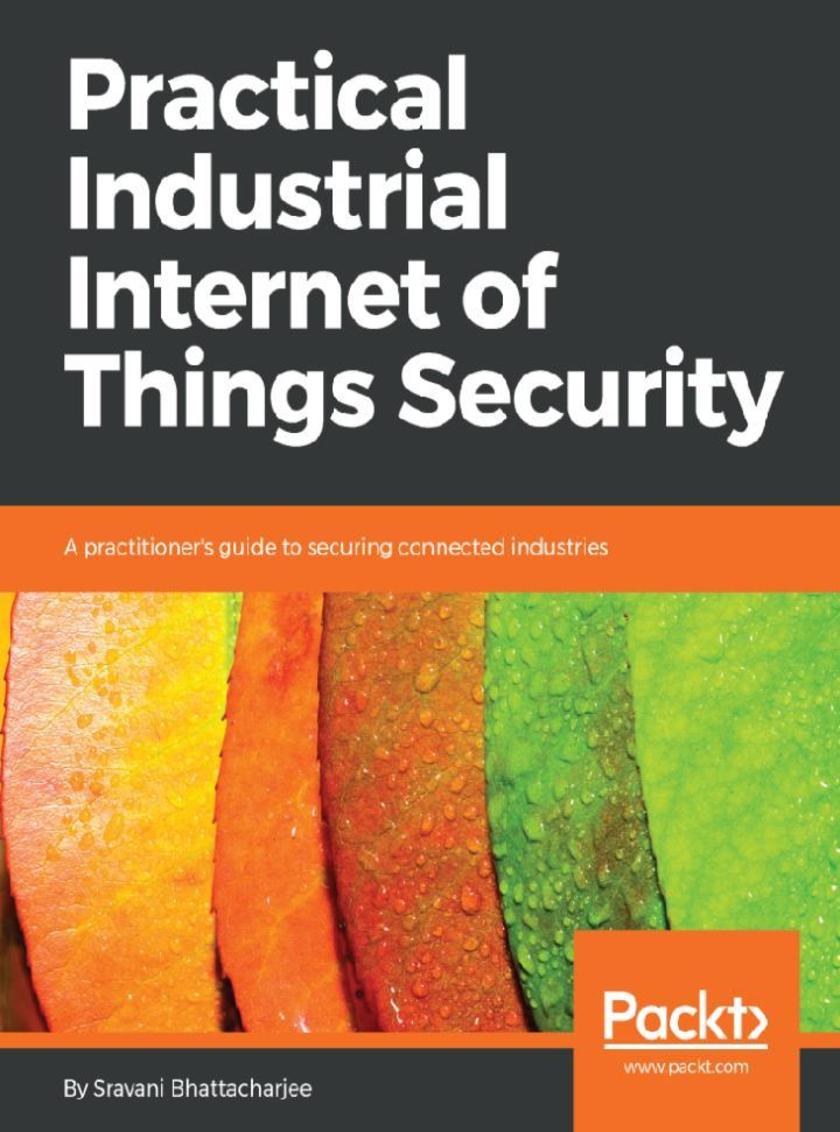
Practical Industrial Internet of Things Security
¥69.75
Over 60 recipes to help you design interactive, smart, and cross-platform GUI applications Key Features * Get succinct QT solutions to pressing GUI programming problems in Python * Learn how to effectively implement reactive programming * Build customized applications that are robust and reliable Book Description PyQt is one of the best cross-platform interface toolkits currently available; it's stable, mature, and completely native. If you want control over all aspects of UI elements, PyQt is what you need. This book will guide you through every concept necessary to create fully functional GUI applications using PyQt, with only a few lines of code. As you expand your GUI using more widgets, you will cover networks, databases, and graphical libraries that greatly enhance its functionality. Next, the book guides you in using Qt Designer to design user interfaces and implementing and testing dialogs, events, the clipboard, and drag and drop functionality to customize your GUI. You will learn a variety of topics, such as look and feel customization, GUI animation, graphics rendering, implementing Google Maps, and more. Lastly, the book takes you through how Qt5 can help you to create cross-platform apps that are compatible with Android and iOS. You will be able to develop functional and appealing software using PyQt through interesting and fun recipes that will expand your knowledge of GUIs What you will learn * Use basic Qt components, such as a radio button, combo box, and sliders * Use QSpinBox and sliders to handle different signals generated on mouse clicks * Work with different Qt layouts to meet user interface requirements * Create custom widgets and set up customizations in your GUI * Perform asynchronous I/O operations and thread handling in the Python GUI * Employ network concepts, internet browsing, and Google Maps in UI * Use graphics rendering and implement animation in your GUI * Make your GUI application compatible with Android and iOS devices Who this book is for If you’re an intermediate Python programmer wishing to enhance your coding skills by writing powerful GUIs in Python using PyQT, this is the book for you.
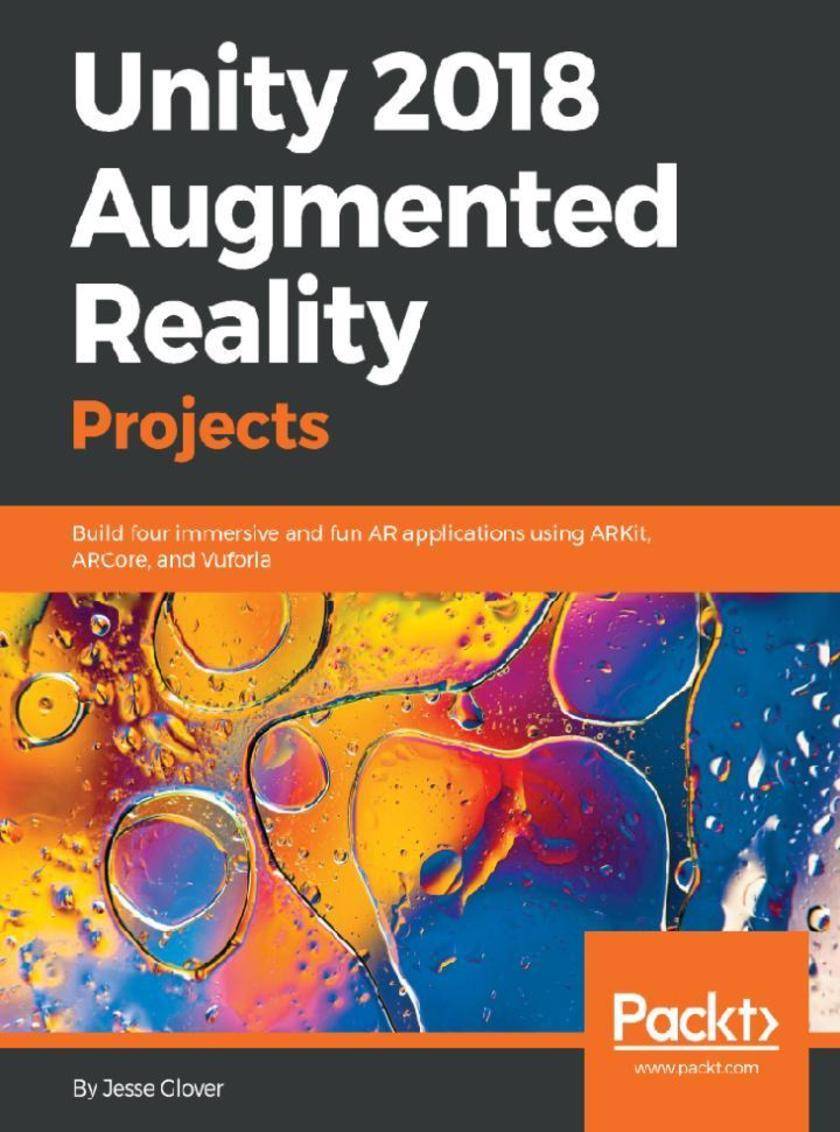
Unity 2018 Augmented Reality Projects
¥78.47
Learn the fundamentals of Java EE 8 APIs to build effective web services Key Features *Design modern and stylish web services with Java EE APIs *Secure your web services with JSON Web Tokens *Explore the advanced concepts of RESTful web services and the JAX-RS API Book Description Java Enterprise Edition is one of the leading application programming platforms for enterprise Java development. With Java EE 8 finally released and the first application servers now available, it is time to take a closer look at how to develop modern and lightweight web services with the latest API additions and improvements. Building RESTful Web Services with Java EE 8 is a comprehensive guide that will show you how to develop state-of-the-art RESTful web services with the latest Java EE 8 APIs. You will begin with an overview of Java EE 8 and the latest API additions and improvements. You will then delve into the details of implementing synchronous RESTful web services and clients with JAX-RS. Next up, you will learn about the specifics of data binding and content marshalling using the JSON-B 1.0 and JSON-P 1.1 APIs. This book also guides you in leveraging the power of asynchronous APIs on the server and client side, and you will learn to use server-sent events (SSEs) for push communication. The final section covers advanced web service topics such as validation, JWT security, and diagnosability. By the end of this book, you will have implemented several working web services and have a thorough understanding of the Java EE 8 APIs required for lightweight web service development. What you will learn *Dive into the latest Java EE 8 APIs relevant for developing web services *Use the new JSON-B APIs for easy data binding *Understand how JSON-P API can be used for flexible processing *Implement synchronous and asynchronous JAX-RS clients *Use server-sent events to implement server-side code *Secure Java EE 8 web services with JSON Web Tokens Who this book is for If you're a Java developer who wants to learn how to implement web services using the latest Java EE 8 APIs, this book is for you. Though no prior knowledge of Java EE 8 is required, experience with a previous Java EE version will be beneficial.
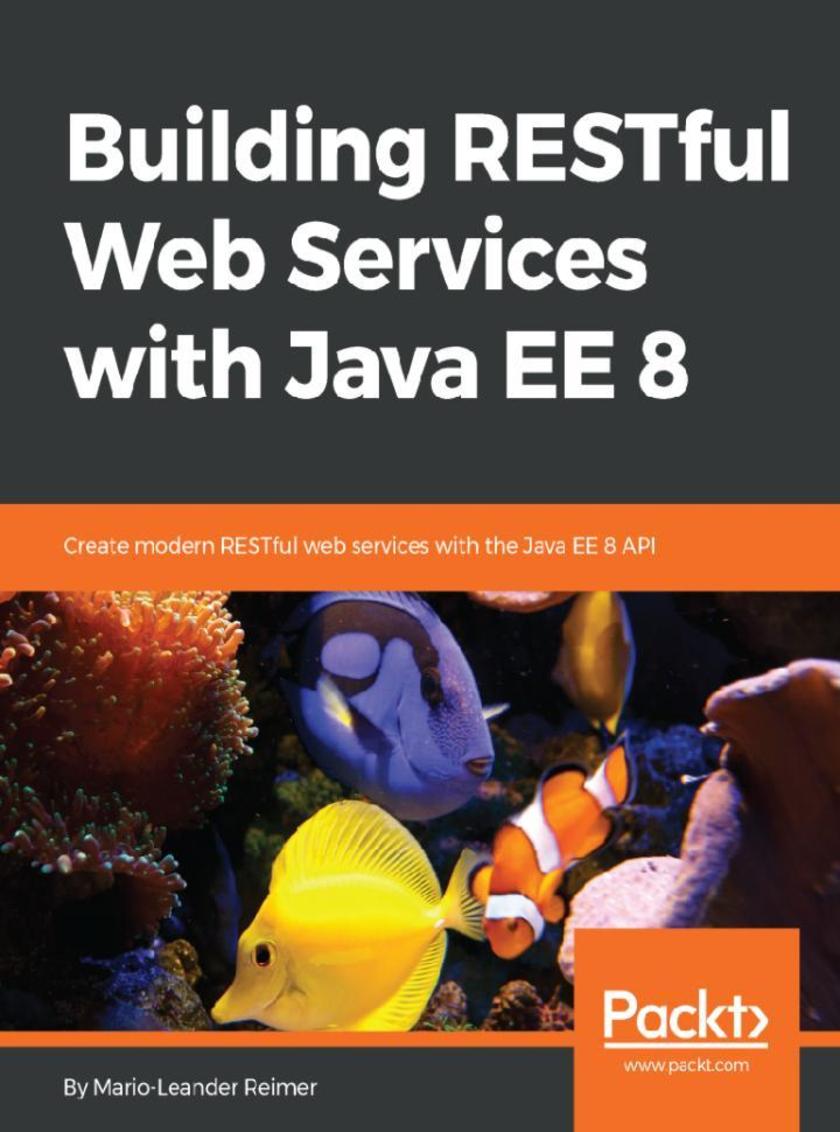
Building RESTful Web Services with Java EE 8
¥52.31
Architect and design data-intensive applications and, in the process, learn how to collect, process, store, govern, and expose data for a variety of use cases Key Features *Integrate the data-intensive approach into your application architecture *Create a robust application layout with effective messaging and data querying architecture *Enable smooth data flow and make the data of your application intensive and fast Book Description Are you an architect or a developer who looks at your own applications gingerly while browsing through Facebook and applauding it silently for its data-intensive, yet ?uent and efficient, behaviour? This book is your gateway to build smart data-intensive systems by incorporating the core data-intensive architectural principles, patterns, and techniques directly into your application architecture. This book starts by taking you through the primary design challenges involved with architecting data-intensive applications. You will learn how to implement data curation and data dissemination, depending on the volume of your data. You will then implement your application architecture one step at a time. You will get to grips with implementing the correct message delivery protocols and creating a data layer that doesn’t fail when running high traffic. This book will show you how you can divide your application into layers, each of which adheres to the single responsibility principle. By the end of this book, you will learn to streamline your thoughts and make the right choice in terms of technologies and architectural principles based on the problem at hand. What you will learn *Understand how to envision a data-intensive system *Identify and compare the non-functional requirements of a data collection component *Understand patterns involving data processing, as well as technologies that help to speed up the development of data processing systems *Understand how to implement Data Governance policies at design time using various Open Source Tools *Recognize the anti-patterns to avoid while designing a data store for applications *Understand the different data dissemination technologies available to query the data in an efficient manner *Implement a simple data governance policy that can be extended using Apache Falcon Who this book is for This book is for developers and data architects who have to code, test, deploy, and/or maintain large-scale, high data volume applications. It is also useful for system architects who need to understand various non-functional aspects revolving around Data Intensive Systems.
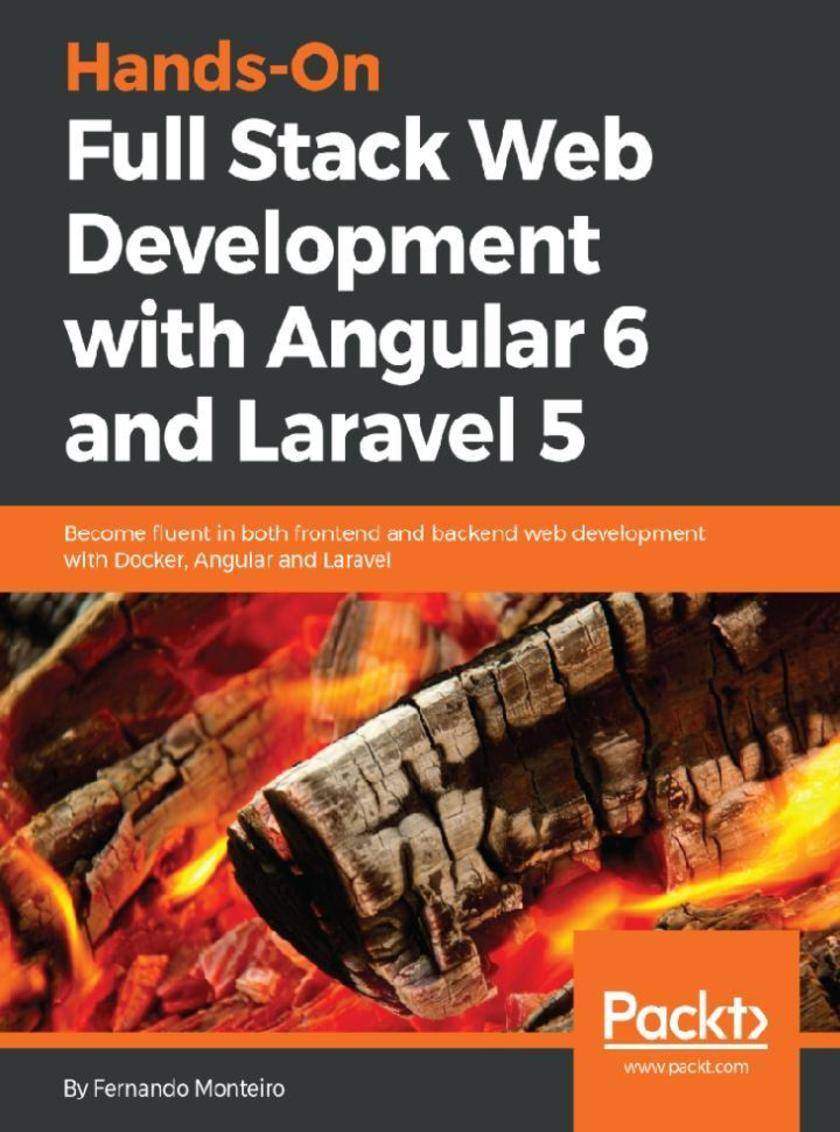
Hands-On Full Stack Web Development with Angular 6 and Laravel 5
¥78.47
Implement intelligent agents using PyTorch to solve classic AI problems, play console games like Atari, and perform tasks such as autonomous driving using the CARLA driving simulator Key Features *Explore the OpenAI Gym toolkit and interface to use over 700 learning tasks *Implement agents to solve simple to complex AI problems *Study learning environments and discover how to create your own Book Description Many real-world problems can be broken down into tasks that require a series of decisions to be made or actions to be taken. The ability to solve such tasks without a machine being programmed requires a machine to be artificially intelligent and capable of learning to adapt. This book is an easy-to-follow guide to implementing learning algorithms for machine software agents in order to solve discrete or continuous sequential decision making and control tasks. Hands-On Intelligent Agents with OpenAI Gym takes you through the process of building intelligent agent algorithms using deep reinforcement learning starting from the implementation of the building blocks for configuring, training, logging, visualizing, testing, and monitoring the agent. You will walk through the process of building intelligent agents from scratch to perform a variety of tasks. In the closing chapters, the book provides an overview of the latest learning environments and learning algorithms, along with pointers to more resources that will help you take your deep reinforcement learning skills to the next level. What you will learn *Explore intelligent agents and learning environments *Understand the basics of RL and deep RL *Get started with OpenAI Gym and PyTorch for deep reinforcement learning *Discover deep Q learning agents to solve discrete optimal control tasks *Create custom learning environments for real-world problems *Apply a deep actor-critic agent to drive a car autonomously in CARLA *Use the latest learning environments and algorithms to upgrade your intelligent agent development skills Who this book is for If you’re a student, game/machine learning developer, or AI enthusiast looking to get started with building intelligent agents and algorithms to solve a variety of problems with the OpenAI Gym interface, this book is for you. You will also find this book useful if you want to learn how to build deep reinforcement learning-based agents to solve problems in your domain of interest. Though the book covers all the basic concepts that you need to know, some working knowledge of Python programming language will help you get the most out of it.
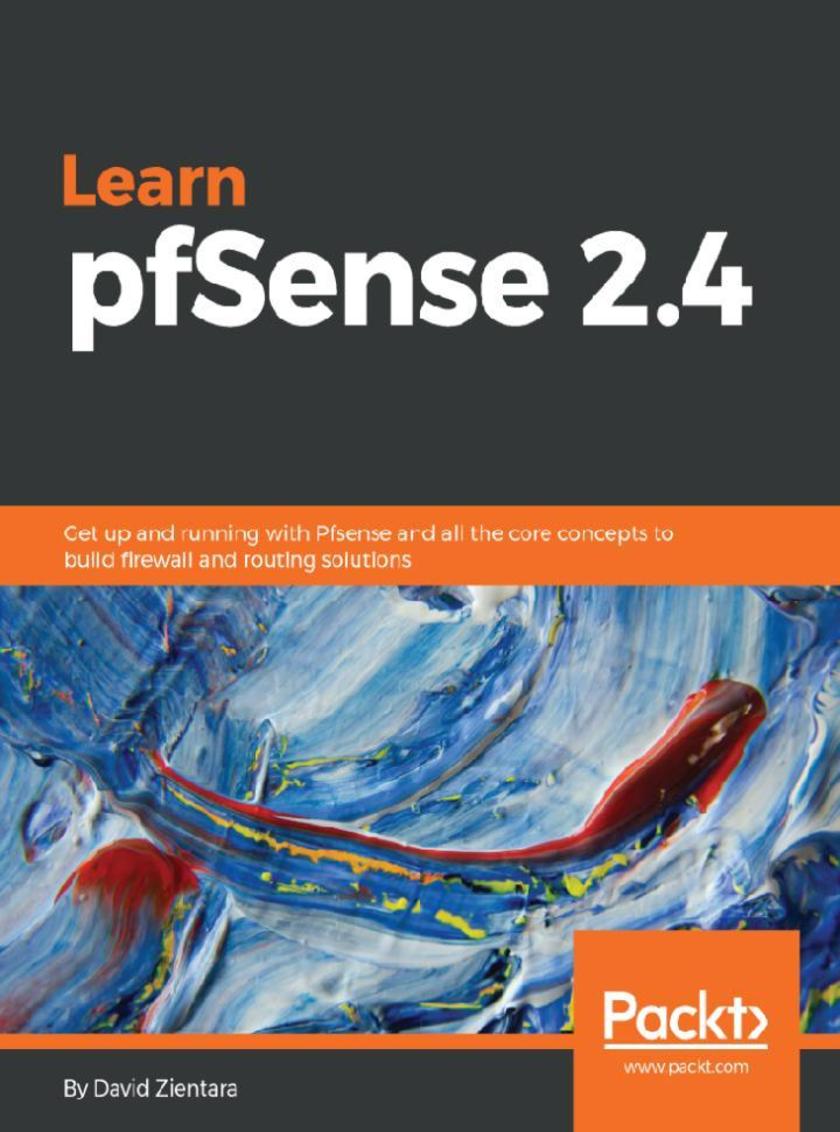
Learn pfSense 2.4
¥78.47
Build, design, and style beautiful and informative applications on the Salesforce Lightning platform Key Features *Build and Test Lightning Components that enhance application usability and adaptability *Apply Security Best Practices to your Custom Lightning Components *Design Lightning Components for Salesforce UIs such as Lightning Pages, Salesforce 1 Application, Communities, and more. Book Description Built on the Salesforce App Cloud, the new Salesforce Lightning Experience combines three major components: Lightning Design System, Lightning App Builder, and Lightning Components, to provide an enhanced user experience. This book will enable you to quickly create modern, enterprise apps with Lightning Component Framework. You will start by building simple Lightning Components and understanding the Lightning Components architecture. The chapters cover the basics of Lightning Component Framework semantics and syntax, the security features provided by Locker Service, and use of third-party libraries inside Lightning Components. The later chapters focus on debugging, performance tuning, testing using Lightning Testing Services, and how to publish Lightning Components on Salesforce AppExchange. What you will learn *Understand Lightning Components architecture *Learn Locker security best practices *Debug and Improve performance of your Lightning Components *Use third-party libraries along with Lightning Component Framework *Learn how to publish Lightning Components on AppExchange *Use Lightning Out to take your Lightning Components outside the Salesforce platform Who this book is for This book is for Salesforce developers or developers from other platforms who are familiar with HTML, CSS, and JavaScript and want to build and test Salesforce Lightning components. No knowledge of Salesforce Lightning is required.

Professional Azure SQL Database Administration
¥87.19
If your application source code is overly verbose, it can be a nightmare to maintain. Write concise and expressive, type-safe code in an environment that lets you build for the JVM, browser, and more. Key Features *Expert guidance that shows you to efficiently use both object-oriented and functional programming techniques *Understand functional programming libraries, such as Cats and Scalaz, and use them to augment your Scala development *Perfectly balances theory and hands-on exercises, assessments, and activities Book Description This book teaches you how to build and contribute to Scala programs, recognizing common patterns and techniques used with the language. You’ll learn how to write concise, functional code with Scala. After an introduction to core concepts, syntax, and writing example applications with scalac, you’ll learn about the Scala Collections API and how the language handles type safety via static types out-of-the-box. You’ll then learn about advanced functional programming patterns, and how you can write your own Domain Specific Languages (DSLs). By the end of the book, you’ll be equipped with the skills you need to successfully build smart, efficient applications in Scala that can be compiled to the JVM. What you will learn *Understand the key language syntax and core concepts for application development *Master the type system to create scalable type-safe applications while cutting down your time spent debugging *Understand how you can work with advanced data structures via built-in features such as the Collections library *Use classes, objects, and traits to transform a trivial chatbot program into a useful assistant *Understand what are pure functions, immutability, and higher-order functions *Recognize and implement popular functional programming design patterns Who this book is for This is an ideal book for developers who are looking to learn Scala, and is particularly well suited for Java developers looking to migrate across to Scala for application development on the JVM.
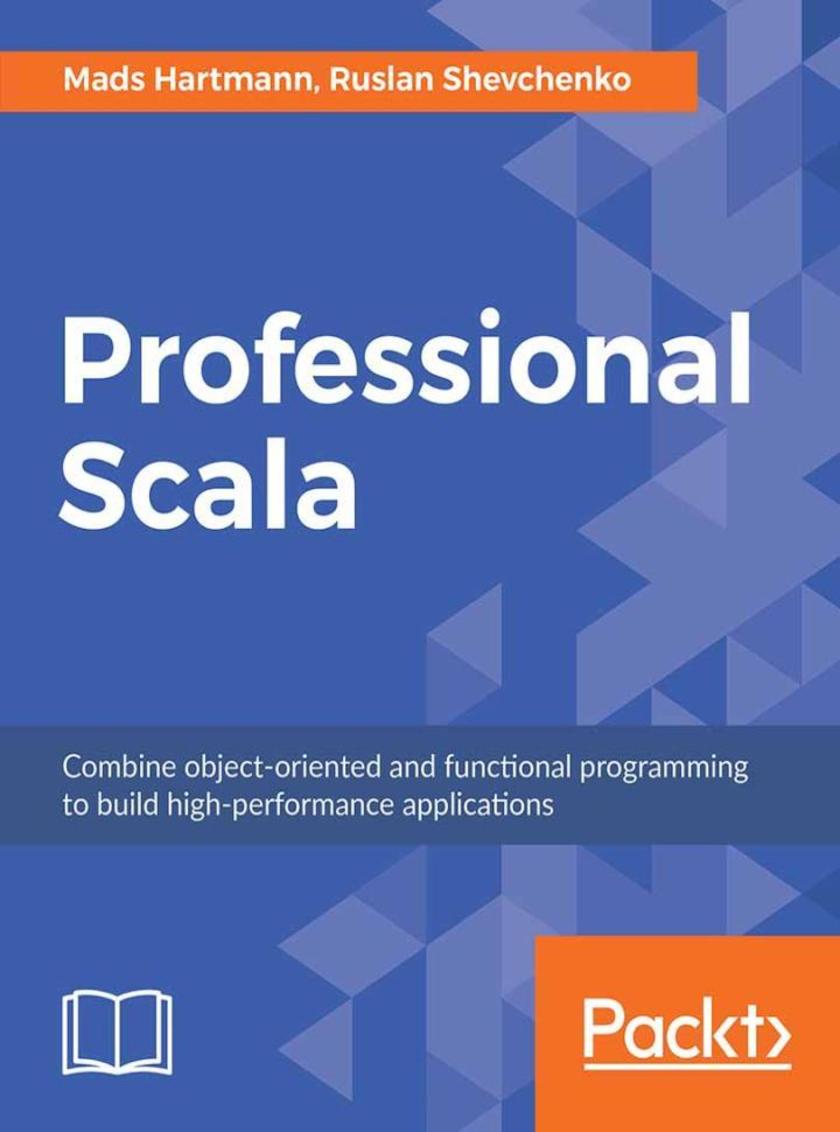
Professional Scala
¥69.75
Build smart applications by implementing real-world artificial intelligence projects Key Features *Explore a variety of AI projects with Python *Get well-versed with different types of neural networks and popular deep learning algorithms *Leverage popular Python deep learning libraries for your AI projects Book Description Artificial Intelligence (AI) is the newest technology that’s being employed among varied businesses, industries, and sectors. Python Artificial Intelligence Projects for Beginners demonstrates AI projects in Python, covering modern techniques that make up the world of Artificial Intelligence. This book begins with helping you to build your first prediction model using the popular Python library, scikit-learn. You will understand how to build a classifier using an effective machine learning technique, random forest, and decision trees. With exciting projects on predicting bird species, analyzing student performance data, song genre identification, and spam detection, you will learn the fundamentals and various algorithms and techniques that foster the development of these smart applications. In the concluding chapters, you will also understand deep learning and neural network mechanisms through these projects with the help of the Keras library. By the end of this book, you will be confident in building your own AI projects with Python and be ready to take on more advanced projects as you progress What you will learn *Build a prediction model using decision trees and random forest *Use neural networks, decision trees, and random forests for classification *Detect YouTube comment spam with a bag-of-words and random forests *Identify handwritten mathematical symbols with convolutional neural networks *Revise the bird species identifier to use images *Learn to detect positive and negative sentiment in user reviews Who this book is for Python Artificial Intelligence Projects for Beginners is for Python developers who want to take their first step into the world of Artificial Intelligence using easy-to-follow projects. Basic working knowledge of Python programming is expected so that you’re able to play around with code
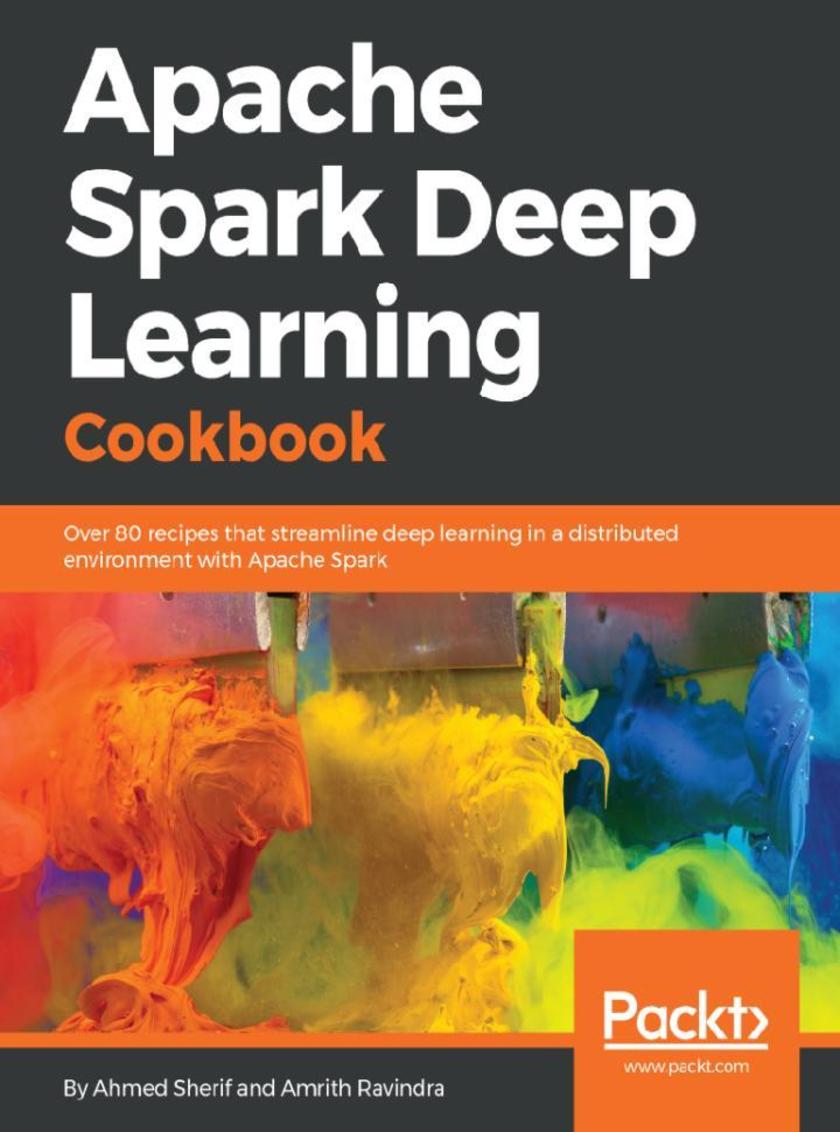
Apache Spark Deep Learning Cookbook
¥82.83
A solution-based guide to put your deep learning models into production with the power of Apache Spark Key Features * Discover practical recipes for distributed deep learning with Apache Spark * Learn to use libraries such as Keras and TensorFlow * Solve problems in order to train your deep learning models on Apache Spark Book Description With deep learning gaining rapid mainstream adoption in modern-day industries, organizations are looking for ways to unite popular big data tools with highly efficient deep learning libraries. As a result, this will help deep learning models train with higher efficiency and speed. With the help of the Apache Spark Deep Learning Cookbook, you’ll work through specific recipes to generate outcomes for deep learning algorithms, without getting bogged down in theory. From setting up Apache Spark for deep learning to implementing types of neural net, this book tackles both common and not so common problems to perform deep learning on a distributed environment. In addition to this, you’ll get access to deep learning code within Spark that can be reused to answer similar problems or tweaked to answer slightly different problems. You will also learn how to stream and cluster your data with Spark. Once you have got to grips with the basics, you’ll explore how to implement and deploy deep learning models, such as Convolutional Neural Networks (CNN) and Recurrent Neural Networks (RNN) in Spark, using popular libraries such as TensorFlow and Keras. By the end of the book, you'll have the expertise to train and deploy efficient deep learning models on Apache Spark. What you will learn * Set up a fully functional Spark environment * Understand practical machine learning and deep learning concepts * Apply built-in machine learning libraries within Spark * Explore libraries that are compatible with TensorFlow and Keras * Explore NLP models such as Word2vec and TF-IDF on Spark * Organize dataframes for deep learning evaluation * Apply testing and training modeling to ensure accuracy * Access readily available code that may be reusable Who this book is for If you’re looking for a practical and highly useful resource for implementing efficiently distributed deep learning models with Apache Spark, then the Apache Spark Deep Learning Cookbook is for you. Knowledge of the core machine learning concepts and a basic understanding of the Apache Spark framework is required to get the best out of this book. Additionally, some programming knowledge in Python is a plus.
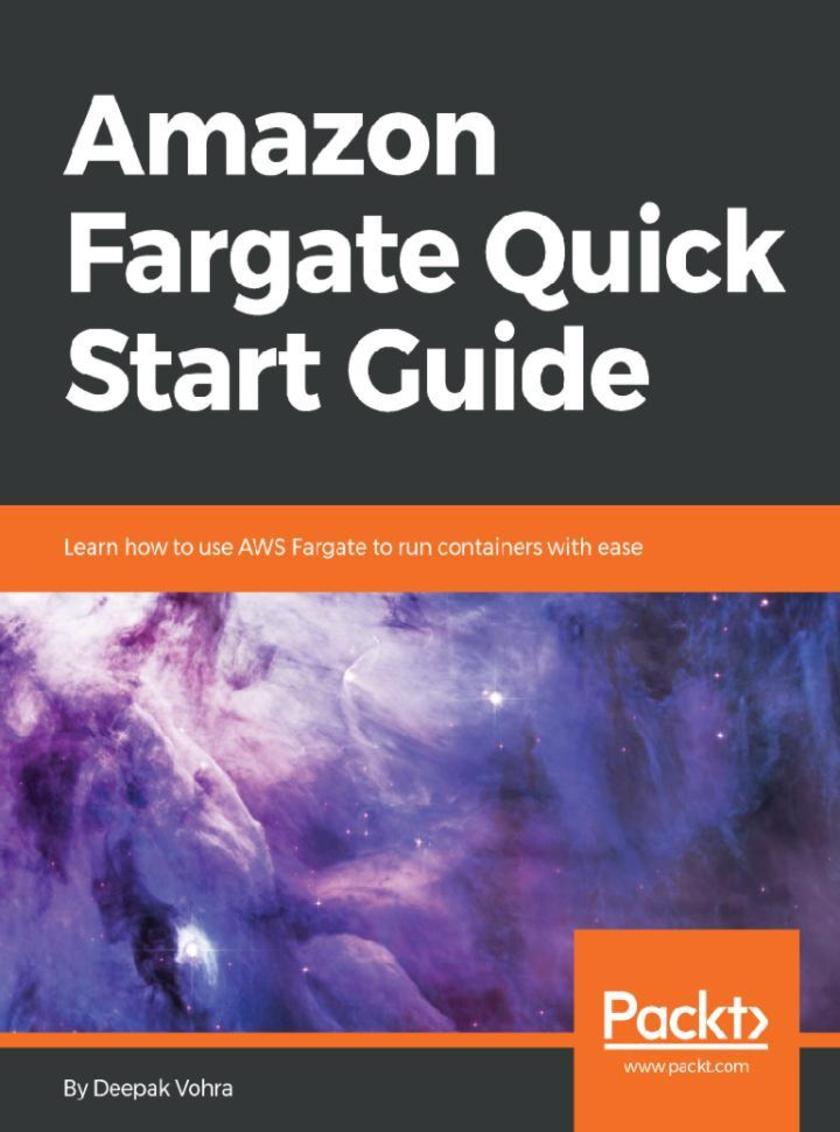
Amazon Fargate Quick Start Guide
¥52.31
This book gets you started and gives you knowledge about AWS Fargate in order to successfully incorporate it in your ECS container application. Key Features *Gives you a quick walk-through over the Amazon Elastic Container Services (ECS) *Provides an in depth knowledge of the components that Amazon Fargate has to offer. *Learn the practical aspects of Docker application development with a managed service Book Description Amazon Fargate is new launch type for the Amazon Elastic Container Service (ECS). ECS is an AWS service for Docker container orchestration. Docker is the de facto containerization framework and has revolutionized packaging and deployment of software. The introduction of Fargate has made the ECS platform serverless. The book takes you through how Amazon Fargate runs ECS services composed of tasks and Docker containers and exposes the containers to the user. Fargate has simplified the ECS platform. We will learn how Fargate creates an Elastic Network Interface (ENI) for each task and how auto scaling can be enabled for ECS tasks. You will also learn about using an IAM policy to download Docker images and send logs to CloudWatch. Finally, by the end of this book, you will have learned about how to use ECS CLI to create an ECS cluster and deploy tasks with Docker Compose. What you will learn *Running Docker containers with a managed service *Use Amazon ECS in Fargate launch mode *Configure CloudWatch Logging with Fargate *Use an IAM Role with Fargate *Understand how ECS CLI is used with Fargate *Learn how to use an Application Load Balancer with Fargate *Learn about Auto Scaling with Fargate Who this book is for This book is for Docker users and developers who want to learn about the Fargate platform. Typical job roles for which the book is suitable are DevOps Architect, Docker Engineer, and AWS Cloud Engineer. Prior knowledge of AWS and ECS is helpful but not mandatory.
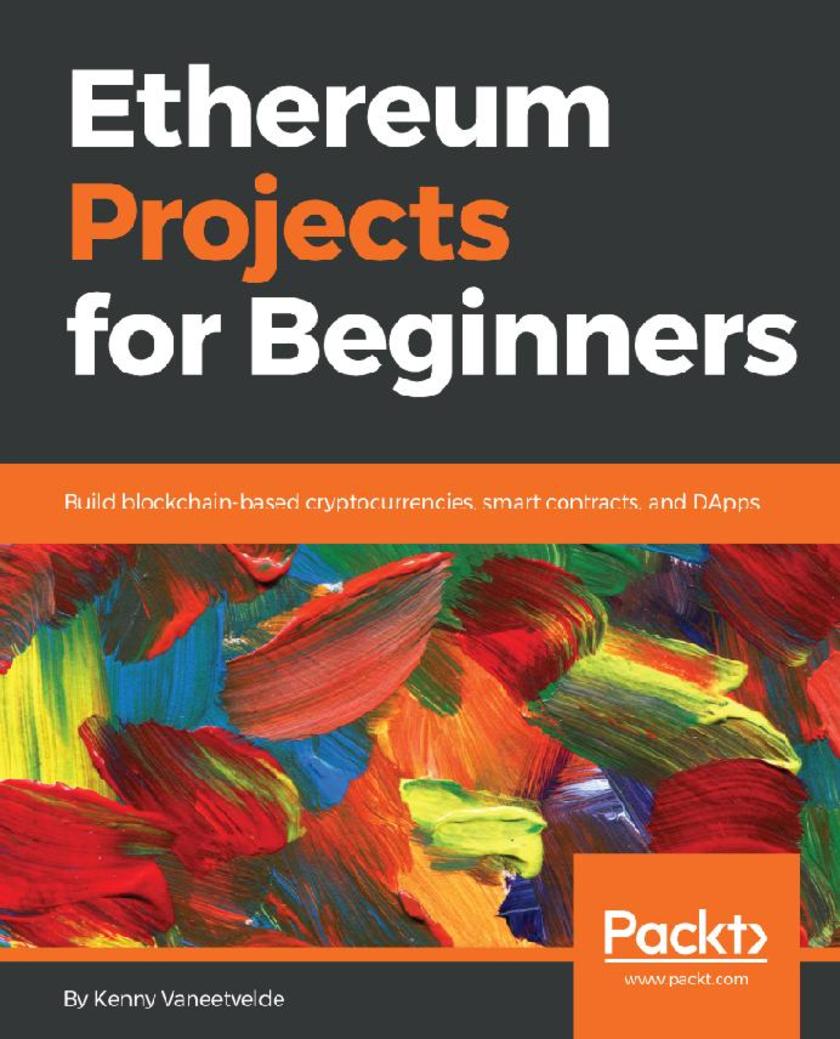
Ethereum Projects for Beginners
¥42.50
Understand the Ethereum platform to build distributed applications that are secured and decentralized using blockchain technology Key Features *Build your own decentralized applications using real-world blockchain examples *Implement Ethereum for building smart contracts and cryptocurrency applications with easy-to-follow projects *Enhance your application security with blockchain Book Description Ethereum enables the development of efficient, smart contracts that contain code. These smart contracts can interact with other smart contracts to make decisions, store data, and send Ether to others.Ethereum Projects for Beginners provides you with a clear introduction to creating cryptocurrencies, smart contracts, and decentralized applications. As you make your way through the book, you’ll get to grips with detailed step-by-step processes to build advanced Ethereum projects. Each project will teach you enough about Ethereum to be productive right away. You will learn how tokenization works, think in a decentralized way, and build blockchain-based distributed computing systems. Towards the end of the book, you will develop interesting Ethereum projects such as creating wallets and secure data sharing.By the end of this book, you will be able to tackle blockchain challenges by implementing end-to-end projects using the full power of the Ethereum blockchain. What you will learn *Develop your ideas fast and efficiently using the Ethereum blockchain *Make writing and deploying smart contracts easy and manageable *Work with private data in blockchain applications *Handle large files in blockchain applications *Ensure your decentralized applications are safe *Explore how Ethereum development frameworks work *Create your own cryptocurrency or token on the Ethereum blockchain *Make sure your cryptocurrency is ERC20-compliant to launch an ICO Who this book is for This book is for individuals who want to build decentralized applications using blockchain technology and the power of Ethereum from scratch. Some prior knowledge of JavaScript is required, since most examples use a web frontend.

Learn PowerShell Core 6.0
¥78.47
Enhance your skills in expert module development, deployment, security, DevOps, and cloud Key Features *A step-by-step guide to get you started with PowerShell Core 6.0 *Harness the capabilities of PowerShell Core 6.0 to perform simple to complex administration tasks *Learn core administrative concepts such as scripting, pipelines, and DSC Book Description Beginning with an overview of the different versions of PowerShell, Learn PowerShell Core 6.0 introduces you to VSCode and then dives into helping you understand the basic techniques in PowerShell scripting. You will cover advanced coding techniques, learn how to write reusable code as well as store and load data with PowerShell. This book will help you understand PowerShell security and Just Enough Administration, enabling you to create your own PowerShell repository. The last set of chapters will guide you in setting up, configuring, and working with Release Pipelines in VSCode and VSTS, and help you understand PowerShell DSC. In addition to this, you will learn how to use PowerShell with Windows, Azure, Microsoft Online Services, SCCM, and SQL Server. The final chapter will provide you with some use cases and pro tips. By the end of this book, you will be able to create professional reusable code using security insight and knowledge of working with PowerShell Core 6.0 and its most important capabilities. What you will learn *Get to grips with Powershell Core 6.0 *Explore basic and advanced PowerShell scripting techniques *Get to grips with Windows PowerShell Security *Work with centralization and DevOps with PowerShell *Implement PowerShell in your organization through real-life examples *Learn to create GUIs and use DSC in production Who this book is for If you are a Windows administrator or a DevOps user who wants to leverage PowerShell to automate simple to complex tasks, then this book is for you. Whether you know nothing about PowerShell or just enough to get by, this guide will give you what you need to go to take your scripting to the next level. You’ll also find this book useful if you’re a PowerShell expert looking to expand your knowledge in areas such as PowerShell Security and DevOps.
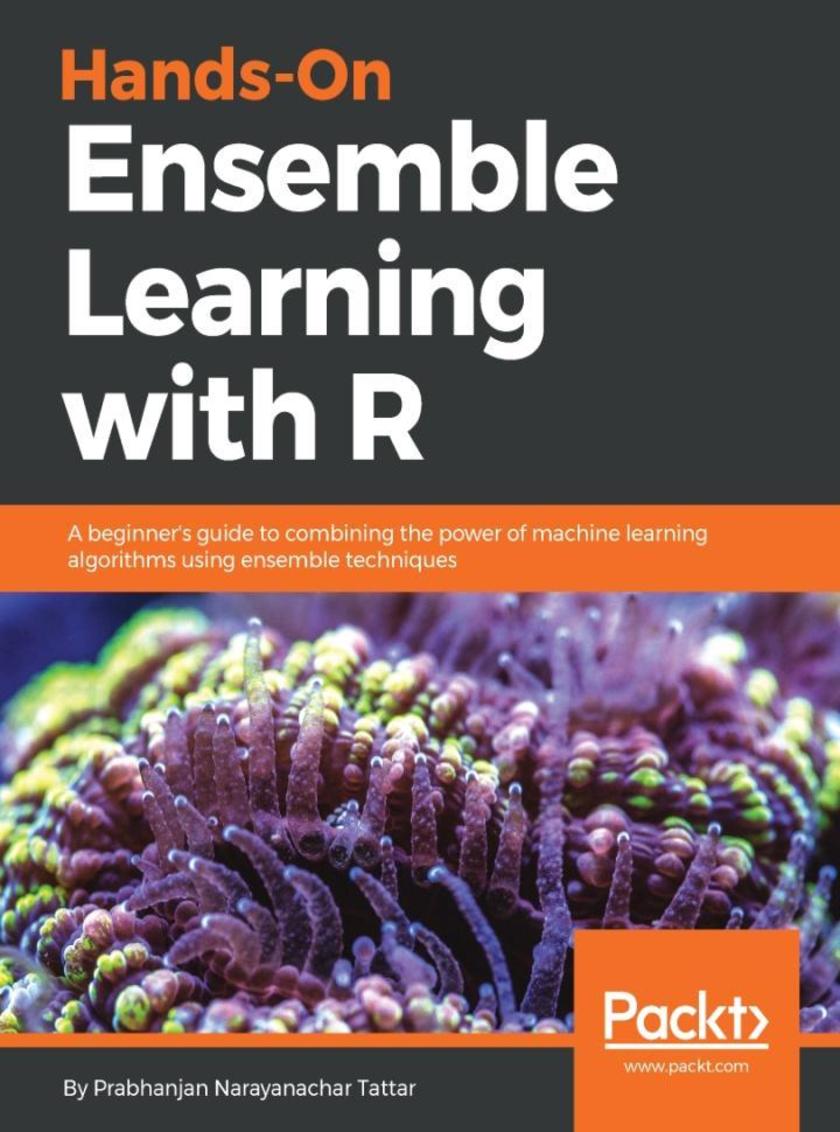
Hands-On Ensemble Learning with R
¥78.47
Explore powerful R packages to create predictive models using ensemble methods Key Features *Implement machine learning algorithms to build ensemble-efficient models *Explore powerful R packages to create predictive models using ensemble methods *Learn to build ensemble models on large datasets using a practical approach Book Description Ensemble techniques are used for combining two or more similar or dissimilar machine learning algorithms to create a stronger model. Such a model delivers superior prediction power and can give your datasets a boost in accuracy. Hands-On Ensemble Learning with R begins with the important statistical resampling methods. You will then walk through the central trilogy of ensemble techniques – bagging, random forest, and boosting – then you'll learn how they can be used to provide greater accuracy on large datasets using popular R packages. You will learn how to combine model predictions using different machine learning algorithms to build ensemble models. In addition to this, you will explore how to improve the performance of your ensemble models. By the end of this book, you will have learned how machine learning algorithms can be combined to reduce common problems and build simple efficient ensemble models with the help of real-world examples. What you will learn *Carry out an essential review of re-sampling methods, bootstrap, and jackknife *Explore the key ensemble methods: bagging, random forests, and boosting *Use multiple algorithms to make strong predictive models *Enjoy a comprehensive treatment of boosting methods *Supplement methods with statistical tests, such as ROC *Walk through data structures in classification, regression, survival, and time series data *Use the supplied R code to implement ensemble methods *Learn stacking method to combine heterogeneous machine learning models Who this book is for This book is for you if you are a data scientist or machine learning developer who wants to implement machine learning techniques by building ensemble models with the power of R. You will learn how to combine different machine learning algorithms to perform efficient data processing. Basic knowledge of machine learning techniques and programming knowledge of R would be an added advantage.




 购物车
购物车 个人中心
个人中心



